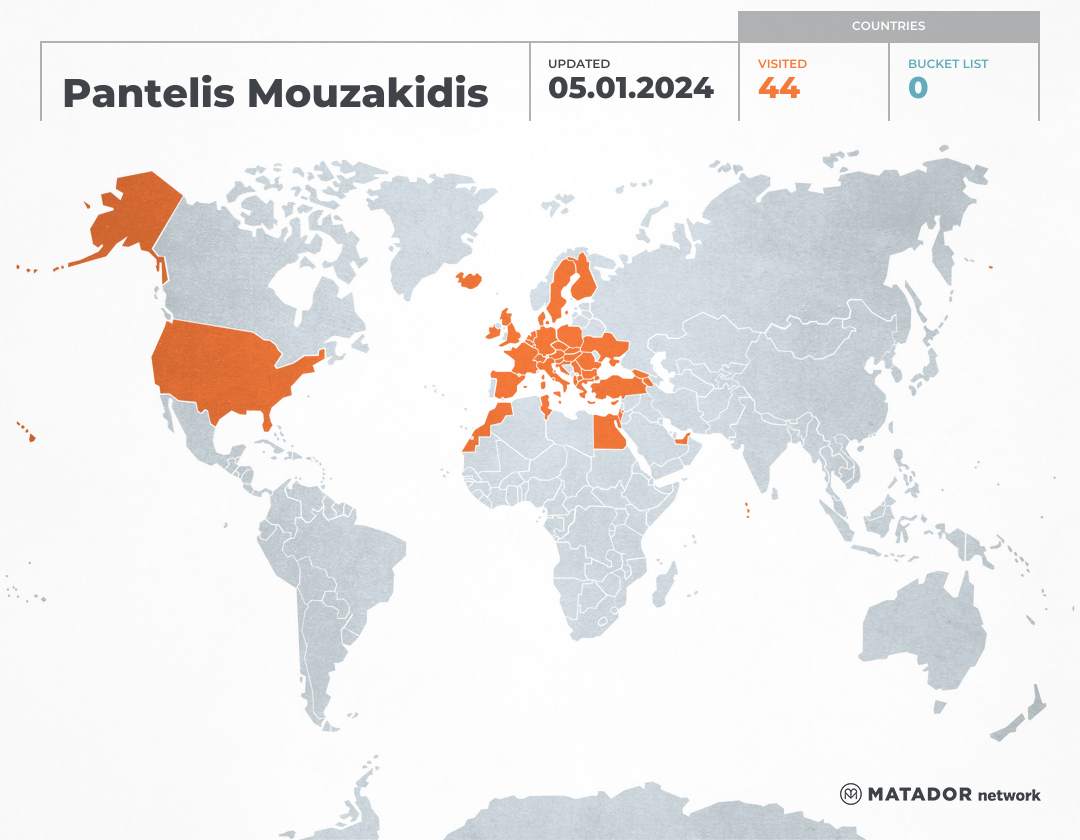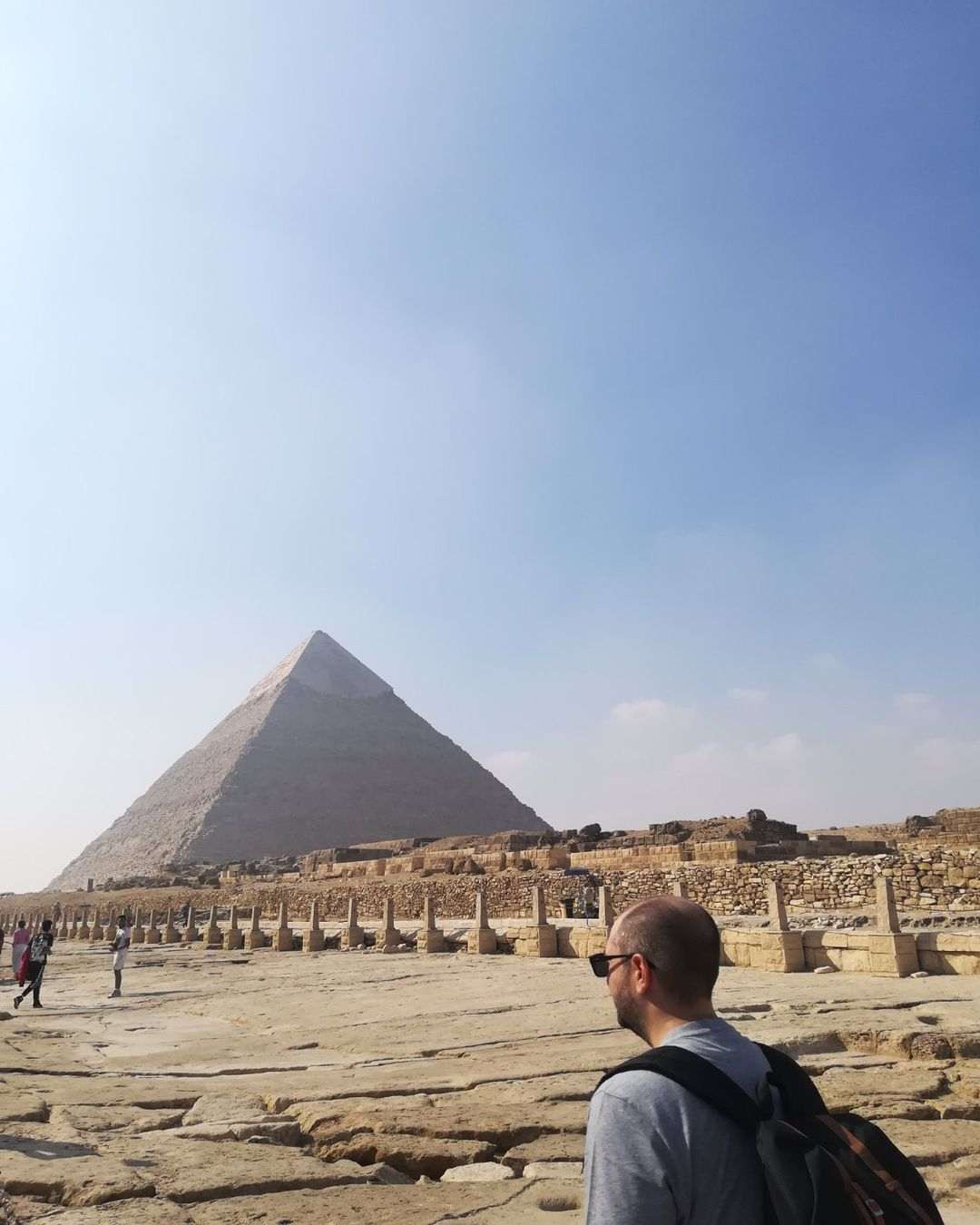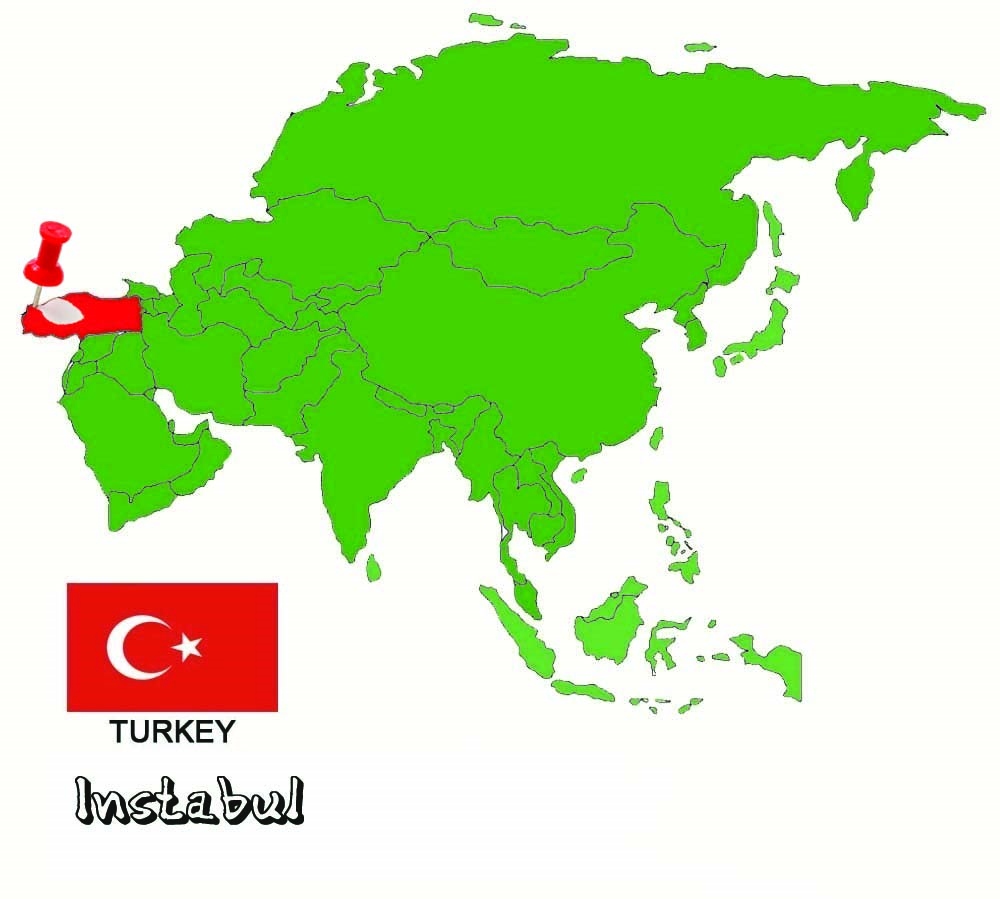
Istanbul was my first experience outside of Greece and to be honest it was like I never left the country. Undoubtedly, the history of the "City of Cities" is inextricably linked to that of my country. Even though hundreds of years have passed since these parts were Greek, the Greek aura still hangs strongly in the air! A city divided between two continents, doomed to divide West from East. With buildings of outstanding Byzantine architecture and mosques with minarets, clear blue waters and picturesque alleys, urban cuisine in all its glory and entertainment with hookahs and women "masters" in belly dancing. All this makes Istanbul one of the most special cities in the world, which you should explore without hesitation.
A few words about the city
Istanbul, is the largest city in Turkey and the fifth most populous in the world, with a population of 15.46 million inhabitants! It is built on the site of the ancient Greek city of Byzantium, which was named after Byzantium Megara, who founded it in 667 BC. From 330, during the years of the Byzantine Empire, it was called Constantinople, keeping its name and after its conquest by the Turks in the Ottoman Empire, until the years of the Turkish Republic. It is built on both sides of the Horned Bay (Altın Boynuz) at the southern entrance of the narrow Bosphorus Strait (Boğaziçi), which with a length of about 35 km connects the Black Sea (Karadeniz) in the north with the Sea of Marmara (Marmara Denizi) in the south. In this way, it is the only city in the world located on two continents, Europe (Eastern Thrace) and Asia, thus being the economic, cultural and historical center of the country! There are not a few who call it the City of cities, while Napoleon also exclaimed that if the whole world were a state, then the capital would definitely have to be Constantinople! As Greeks, of course, we are particularly connected to the former capital of Byzantium, as it was the cradle of Christianity. My aim is to share with you, what I think a first-time visitor to the city should see.
Ayasofya
For most visitors to Istanbul, Hagia Sophia (Ayasofya) is the most important reason for being in the city. It is one of the leading symbols of Christianity worldwide and an architectural masterpiece. Hagia Sophia was built between 532 and 537 AD, under the administration of Justinian, over an earlier church of the same name that was destroyed by riots. The architects were the physicist, Isidoros and the mathematician, Artemios, who changed the history of architecture with the construction of Hagia Sophia. Many myths and legends attribute the construction of the temple to God, who indirectly supplied the architectural plans. Especially for the dome of Hagia Sophia, its imposingness and its height inside the gigantic temple, made people talk about a dome hanging from the sky! Unfortunately, after the fall of the city in 1453, the temple was vandalized by the Ottomans, who demolished parts of the church, plastered over the gilded mosaics and turned it into a mosque. Since 1935, however, the monument has functioned as a museum with thousands of tourists having visited it from all over the world. As of course you will already know, from 2020 the Turkish government turned Hagia Sophia into a mosque again! Upon entering the temple, the visitor's feelings are mixed, as awe and sadness alternate. Even though the remaining magical mosaics have been taken away, the size and history of Hagia Sophia will surely captivate you. Entry is now free.
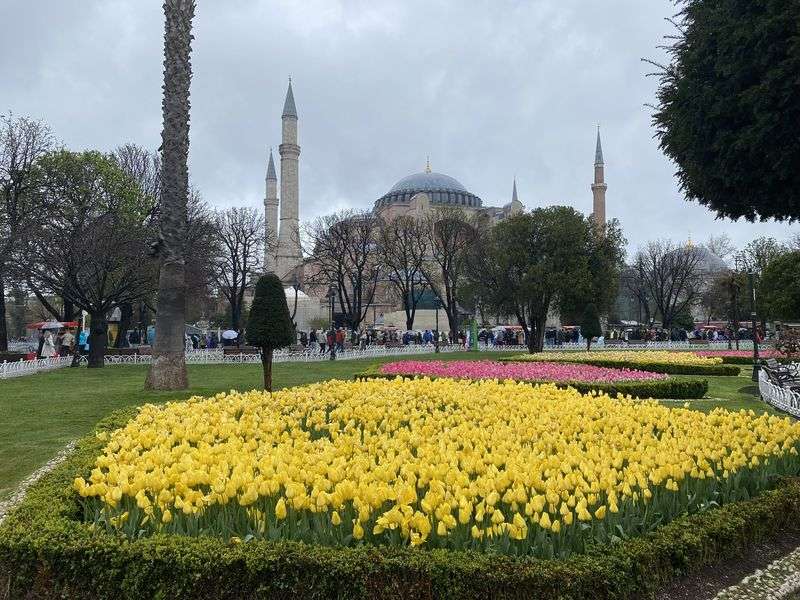
Sultanahmet Camii
Second stop the Sultan Ahmet Mosque (Sultanahmet Camii) or Blue Mosque as it is popularly known, due to the Iznik tiles that adorn its interior and exterior walls. It was built between 1609 and 1616 in an attempt to outdo the splendor of Hagia Sophia, which is directly opposite (unsuccessfully in my opinion). This particular mosque caused a stir throughout the Muslim world when it was completed; as it had six minarets (the same number as the Great Mosque of Mecca). To smooth things over, the Sultan donated a seventh minaret to Mecca to end the dispute. As is common with many other mosques, the Sultan Ahmed Mosque includes the tomb of its founder. Today the Blue Mosque is still active for prayer and at the same time a famous attraction. Thousands of tourists pass its gates every day wanting to see what the inside of a Muslim mosque is like. The entrance to the Blue Mosque is on its left side, but before entering you will need to get some bags. There you will place your shoes, as it is forbidden to enter with them, while women will need to cover their heads with a headscarf. The interior of the mosque is decorated with 20,000 hand-made tiles, while the magnificent carpets that cover every inch of the floor and allow worshipers to worship are also outstanding. Entry is of course free.
Topkapi Sarayi
The Topkapi Palace (Topkapi Sarayi) is a cluster of Ottoman buildings built on the promontory of Sarayburnu, the citadel of ancient Byzantium, behind Hagia Sophia. In fact, it can be seen from almost every point of the Bosphorus and Golden Horn. When the Ottoman Empire occupied the city, the need for a new palace arose and the Sultan chose this particular spot. Work began in 1459 and was originally called the "New Palace". Top Kapi is essentially a complex consisting of four main courtyards and many smaller buildings, such as Muslim mosques, a hospital and a bakery, and is considered an excellent example of Islamic architecture. It was used for 400 years as the main residence of the Sultans and in its golden age the palace was home to 4000 people! From the end of the 17th century, however, it began to lose its glamour, as the sultans preferred to spend longer hours and transfer various functions to the new palaces along the Bosphorus. After the end of the Ottoman Empire in 1921, Top Kapi was turned into a museum. Of the many attractions here, the most popular are the Harem complex (where the Sultan's many concubines and children spent their days). The Second Court, where you can walk through the vast palace kitchens and stand in awe of the dazzling interior of the Imperial Council Chamber, and the Third Court, which contained the sultan's private rooms. Of particular interest is a specific spot in the Third Courtyard, where an impressive collection of relics of the Prophet Muhammad is exhibited! The entrance to the Palace and the Church of Hagia Irene (Hagia Irene), which is right next door, costs 150 Turkish Lira, which is about 5e.
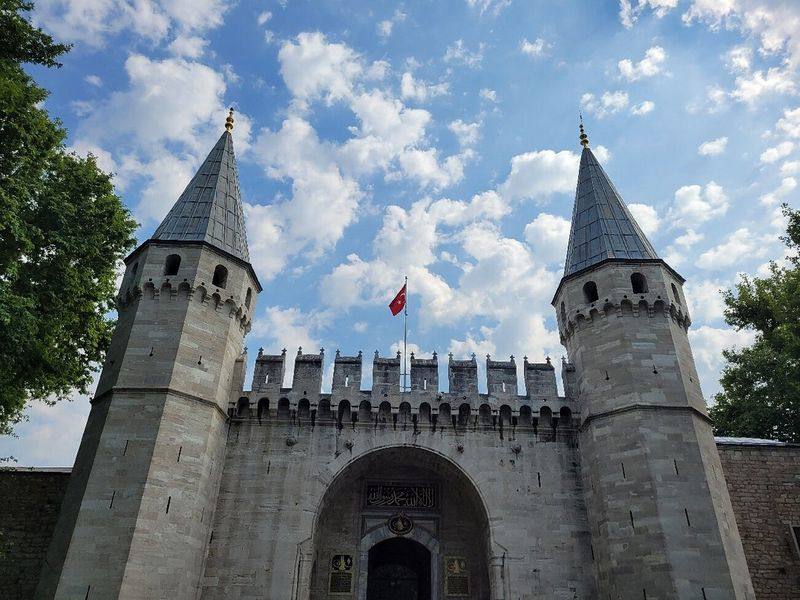
Dolmabahce Sarayi
Dolmabahce Palace (Dolmabahce Sarayi) is the most beautiful and at the same time, the most luxurious palace in the city. It was built by Sultan Abdul Metzit in the middle of the 19th century and was essentially the administrative center of the Ottoman Empire for more than half a century! It is located on the banks of the European side of the Bosporus, covering an area of 110,000 square meters. Its designs belong to the architects Carabet and Nicogios Balian; the interior decoration of the palace was undertaken by the French decorator Sesan, while several other European artists participated in its decoration. It has huge and well-built gardens and consists of 250 luxurious rooms, all decorated by gifts made to the Sultan by his "blue-blooded" guests. A special impression will be made by the wooden floor, which looks like a mosaic, and the giant crystal chandelier weighing 3.5 tons, in the throne room, which fills the space with reflections. Very interesting is the fact that Dolmabahce was the last residence of Kemal Ataturk, who left his last breath here on November 10, 1938. The palace has been operating as a museum since 1960 and receives thousands of visitors every day, but unfortunately inside the palace photos are banned and security people are very strict. The entrance to the palace costs 120 Turkish Lira, (ie about 4e), while if you want to enter the harem area as well, you will have to pay another 90 lira (about 3e).
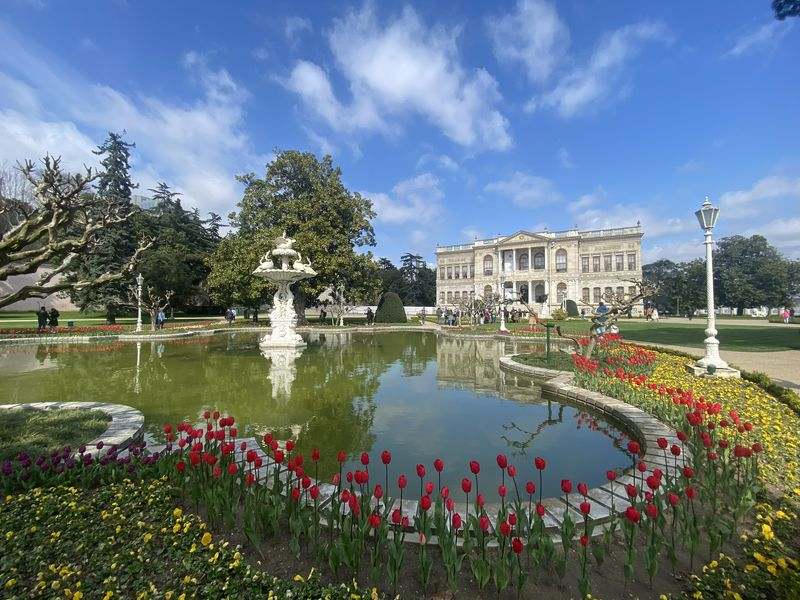
Yerebatan Saray
The Basilica Cistern (Yerebatan Saray) was the largest underground water tank built in Istanbul. It is located on the first hill of the city, about 150 meters southwest of Hagia Sophia, in the Sultanahmet area of the historic center. It is a masterpiece of Byzantine engineering with a capacity of more than 80,000 cubic meters of water! It was probably built by Constantine the Great and expanded under Justinian, with the aim of supplying the city with water in case of a siege. It is 140 meters long and 70 meters wide, while its roof is supported by 336 columns. Each of them is topped by an elaborate capital and two columns rest on plinths bearing the head of Medusa. After the capture of the city by the Ottomans, it seems that knowledge about the cistern was lost, but it was later discovered by Pierre Gilles during his tour of Istanbul in the mid-16th century. A part of the structure was covered with bricks during the 19th century and was not rebuilt. This aqueduct is one of the most surprising and romantic monuments of Istanbul. The evocative lighting, the magnificent columns, the drops gently falling on the water, create an enchanting atmosphere. In fact, due to the excellent acoustics of the place, classical music concerts are given today. From 09.00 to 19.00 the ticket costs 350 Turkish Lira (ie about 12e), while from 19.00 to 22.00, 550 Turkish lira (ie about 18.50e).
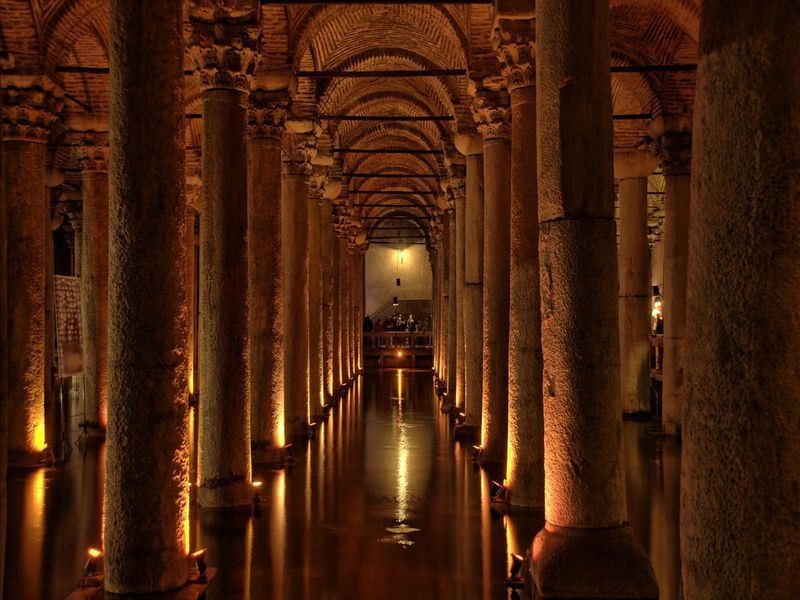
Kapali Carsi
The Grand Bazaar (Kapali Carsi) is one of the largest and oldest covered markets in the world, since it exist since 1461! It is located in the old part of Istanbul and covers an area of 30,700 square meters, where you will discover over 58 streets and 3600 shops, which pass 250.000 to 400.000 visitors daily! The range of products in the bazaar is extremely large, since you can find jewelry, antiques, leather, textiles, carpets, tourist souvenirs, ceramics, hookahs, wood products, spices, etc. as well as restaurants, fountains, mosques, houses, Turkish baths, exchange rooms, etc. If you like or you are good in prices negotiation, then Kapali Carsi is the place for you, as it is said that the sellers have deliberately raised prices by 10 to 25% just for this reason. Take care of your personal belongings, as there are many small crooks who exploit the crowds, while be prepared to avoid many "touts", who will try to approach you in every language.
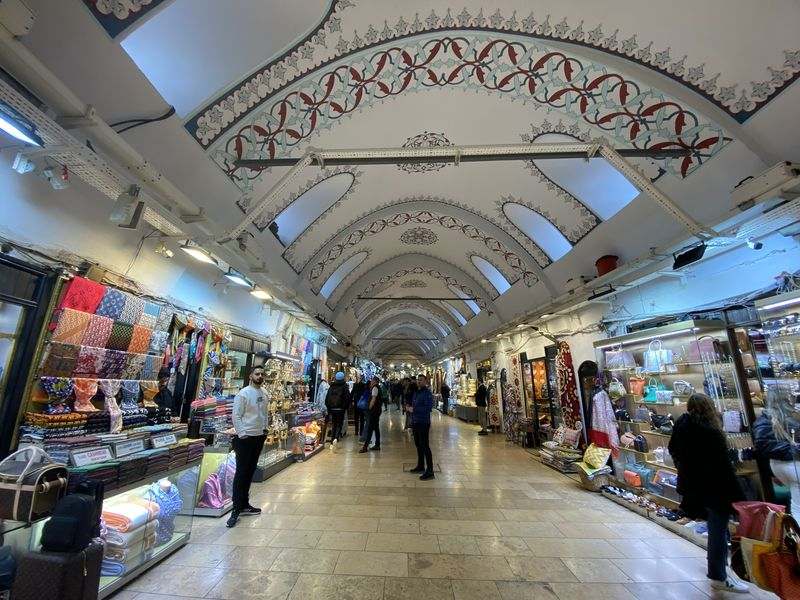
Mısır Çarşısı
Fairly close is the Spice Market (Mısır Çarşısı) or as it is known to the locals the Egyptian Bazaar. It is the second most famous bazaar after Kapali Chari and is also considered one of the biggest markets in the city. It is open seven days a week and has been operating since 1664! Furthermore, the market has a "Γ" shape and six gates, while inside it hosts dozens of cafes and small taverns. The roof of the Spice Market is higher than that of the Grand Bazaar and is also covered by domes. A visit there will awaken all your senses and put you in the Middle Eastern feeling for good.
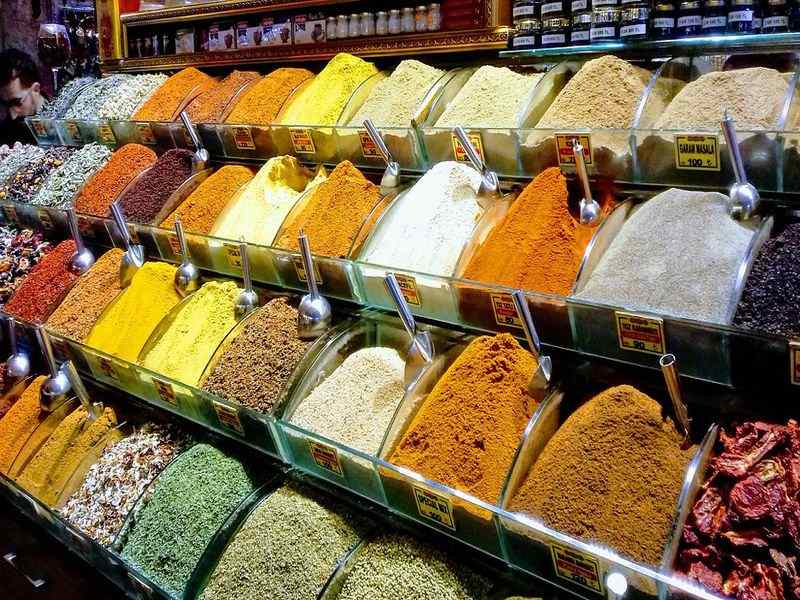
Süleymaniye Camii
The Süleymaniye Mosque (Süleymaniye Camii) is the second largest mosque in the city, but it is included in the list of UNESCO World Heritage Sites! This imposing mosque is located on the second hill of the old city in a prominent position overlooking the Horn Bay and was built by the legendary architect, Mimar Sinan. In fact, it is considered one of the most important monuments of Ottoman architecture of the 16th century and the area of the mosque has been a protected area since 1980! The mosque and the wider building complex that surrounds it were erected by order of Sultan Suleiman I (b. 1520-66) as a victory monument after the conquest of Rhodes and Baghdad. Its construction began in 1550 and lasted until 1557, while its cost reached 700,000 florins. The material of its construction and especially the columns were collected from various monuments of ancient Greece in Asia Minor, Alexandria, and other cities as well as from old Christian temples! However, the history of the mosque was not always easy. It was destroyed by fire in 1660 and when it was restored by the Fossati brothers (under the orders of Sultan Mehmet IV) it changed to a more baroque style, destroying the original design. During World War I, the yard was used as a weapons depot, which led to another fire when some of the ammunition caught fire. What we see today is the result of the last renovation that took place only in 2010! Since then, the Suleymaniye Mosque has been open to people, but anyone can visit it, respecting, of course, the place!
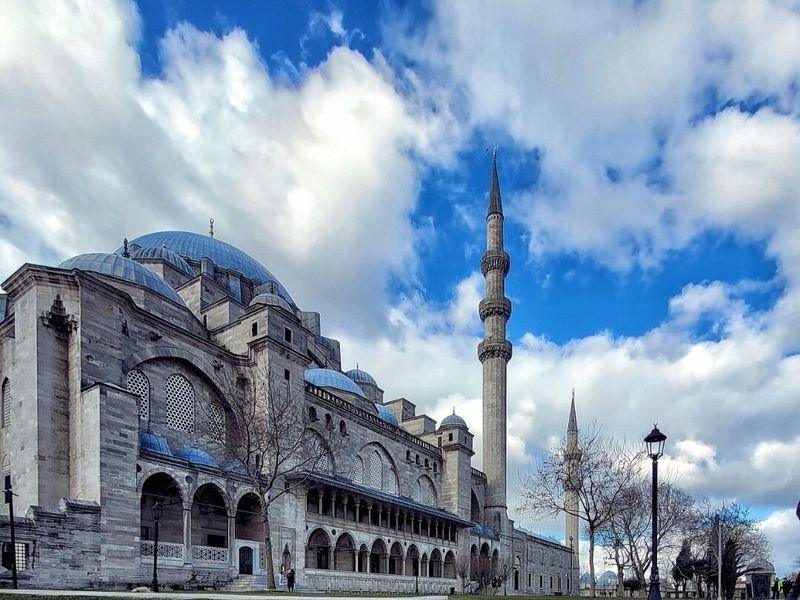
Galata Koprusu & Kulesi
Galata is a central coastal area, located on the northern side of the city and at the edge of the Golden Horn. It is one of the most historic areas of Istanbul and a place where the Greek element particularly flourished. The hallmark of the area is, of course, the Galata Brifge (Galata Koprusu), which crosses the Golden Horn. It is a folded bridge, 490 meters long, which is one of the few bridges in the world that has tram tracks. At the same time, it is foldable, as its left part can be raised, in order to allow large ships to pass through. A special element characterizes the bridge, as it connects the two European coasts of the city on the one hand, while at the same time it separates them, since it acts as a natural border of two different worlds!
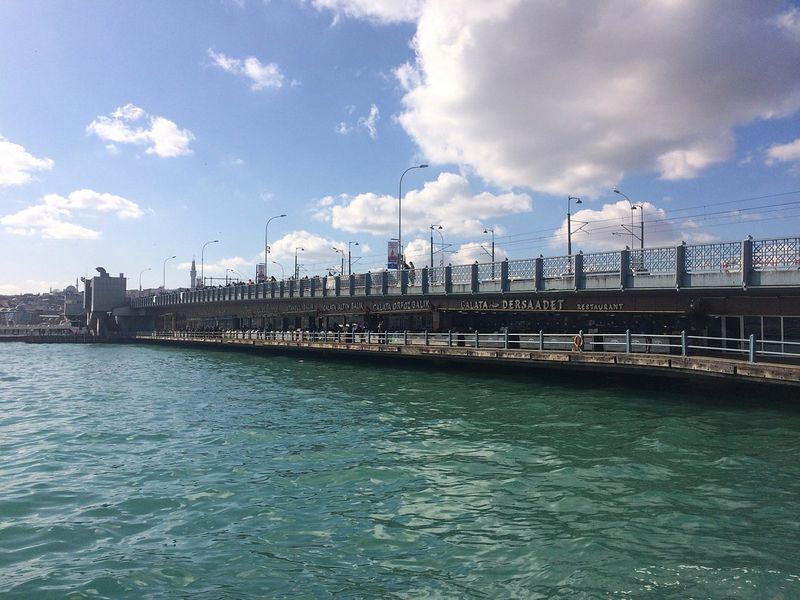
If you look up while crossing the Galata Bridge, you will see Hagia Sophia and the Blue Mosque on one side and the Galata Tower (Galata Kulesi) on the other. This medieval cylindrical tower, 66.9 meters high, was built in 1348. It was part of the fortification of Galata by the Genoese and was then called the Tower of Christ. Later it was used by the Ottomans as a prison, while today it is considered one of the most characteristic sights of the city. A cafe-restaurant operates at its top, while the panoramic view of old Istanbul from there is simply dazzling.
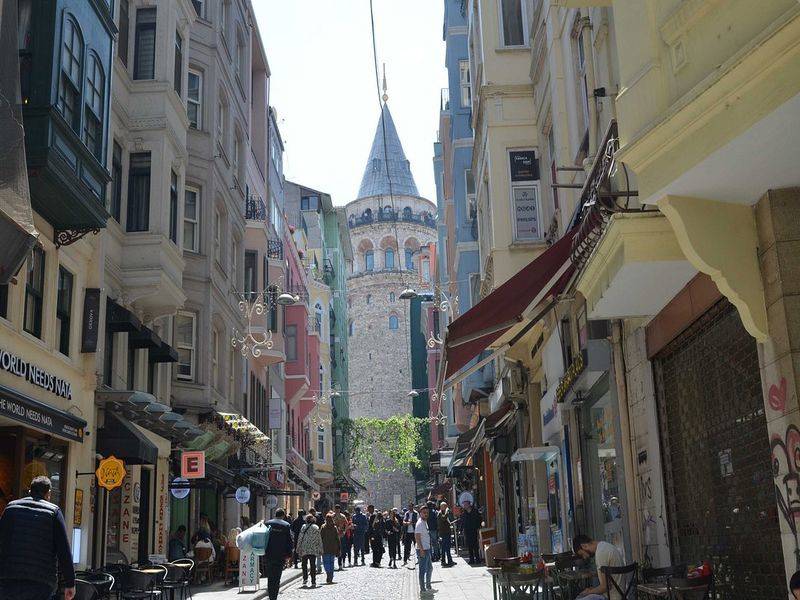
Istanbul Bogazi
It is impossible to visit Istanbul without seeing the Bosphorus (Istanbul Bogazi) up close. The much-sung strait, which marks, together with the Dardanelles, the border between Europe and Asia! It is the narrowest passage for international navigation and connects the Black Sea with the Sea of Marmara, which in turn connects the Dardanelles with the Aegean. The passage is 30 kilometers long, while the city of Istanbul is built along both sides of it. It has two bridges that cross it, and they are about one kilometer long. The first is called the Bridge of the Martyrs of July 15 (15 Temmuz Şehitler Köprüsü) and was built in 1973, while the Fatih Sultan Mehmet Bridge (Fatih Sultan Mehmet Köprüsü) was completed in 1988. There are two ways to enjoy the Bosphorus either by land or by sea. If you choose the first perspective, you have to walk along the cobblestone coast, browse the adjacent parks and admire the dozens of high aesthetic buildings. What I strongly recommend, however, is to board one of the dozens of boats, which offer guided tours in several languages and give you the opportunity to admire the city from another perspective.
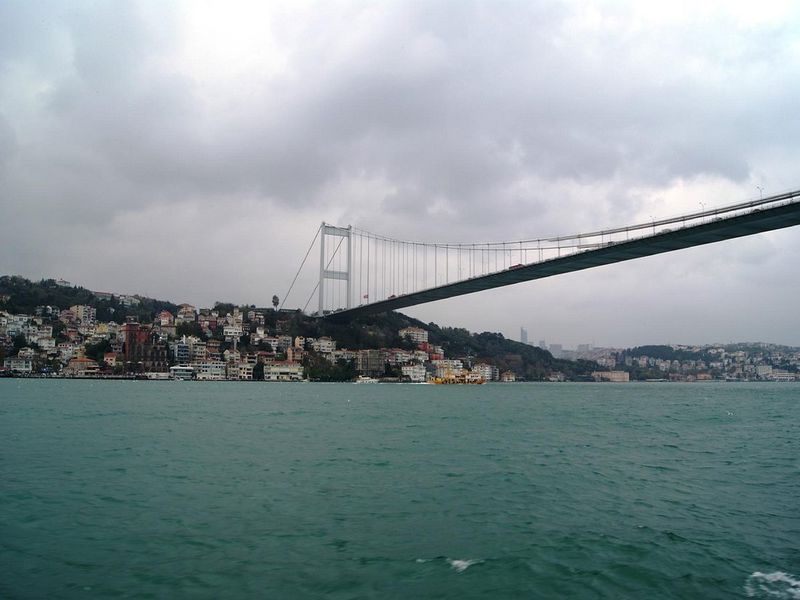
Taksim Meydanι - Istiklal Caddesi
If we were looking for the most central point of Istanbul, this would undoubtedly be Taksim Square (Taksim Meydani). It is the heart of the city's means of transport, as well as the meeting point for tourists and locals. From the square begins the largest pedestrian-avenue of the city the Independence Street (Istiklal Caddesi), which is about one kilometer long. The square is also the location of the Republic Monument (Cumhuriyet Aniti), built by Pietro Canonica. Inaugurated in 1928 to commemorate the 5th anniversary of the founding of the Turkish Republic in 1923, after the Turkish War of independence. In Taksim Square you will also find a nostalgic tram, the second oldest in the world (1875), making a short drive among passers-by. Finally, as the area is the shopping center of Istanbul, you will have the opportunity to find countless luxury shops, quality restaurants, kebab shops and fast food chains, bars and clubs, hotels, etc.
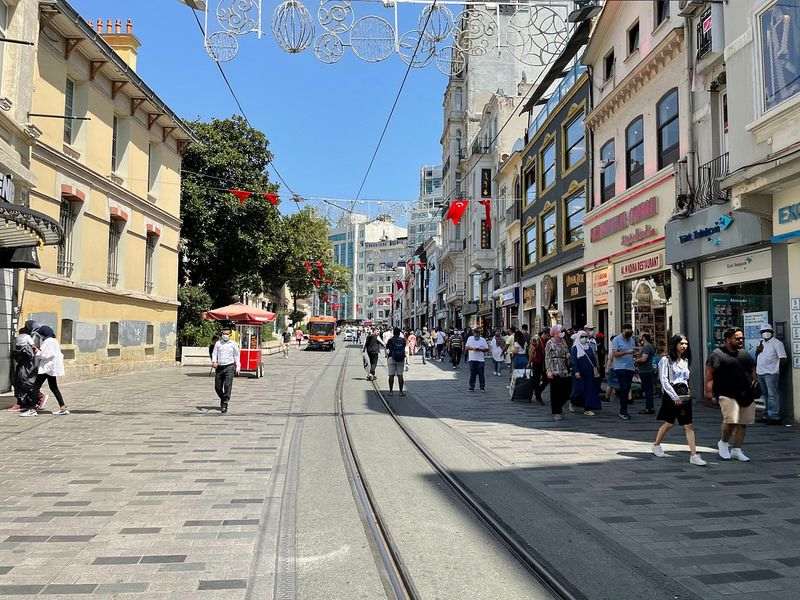
Prens Adalarι
The Princes' Islands (Prens Adalari) or Red Islands are a cluster of nine islands located in the Sea of Marmara, south of Istanbul. In fact, they used to be one of the largest Greek communities in the city! The Greeks and other wealthy residents of the 19th century, built many beautiful mansions which today, together with the fact that motorized vehicles are prohibited, have made Princes' Islands a very famous tourist attraction. Transportation to the islands is done by horse-drawn carriages and bicycles. The largest and most famous of the islands is Büyükada (Big Island) with an area of 5.46 sq.km, while Heybeliada (Saddlebag Island) has nothing to envy with 2.4 sq.km, where the theological school of the same name is located. The other two large islands are Kınalıada (Henna Island) and Burgazada (Fortress Island), while there are also five smaller ones Kaşık Adası (Spoon Island), Tavşan Adası (Rabbit Island), Sivriada (Sharp Island), Yassıada (Flat Island) and Sedef Adası (Mother-of-Pearl Island). To approach them, one needs nothing more than boarding a ferry boat, both from the European and the Asian side of the city.
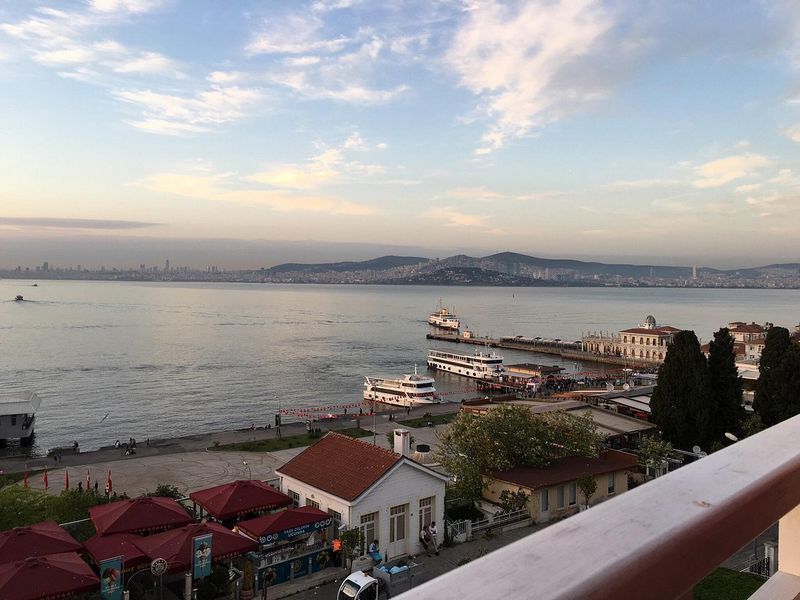
Ecumenical Patriarchate - Monastery of the life giving Spring- Vlaherna
Every Orthodox Christian must visit, at least once in his life, the Ecumenical Patriarchate of Istanbul (İstanbul Ekümenik Patrikhanesi), where the heart of Orthodoxy beats. Patriarch Bartholomew I resides in the Patriarchate, who is the 270th in the line of Patriarch. So it would be ideal to visit it on a Sunday, so that you can also be present at the Divine Liturgy, celebrated by the Patriarch himself. It was founded in 331 AD that is, when the capital of the Roman Empire was moved from Rome to New Rome, Constantinople. In 1599, the Holy Church of Saint George was also founded, which is the main place of worship of the Patriarchate. With the capture of the city in 1453 by the Turks, the Patriarchate was recognized as the political representative of the Christian subjugated nations of the Ottoman Empire. In this way the Patriarch defended the rights of these people at the High Gate, but also the High Gate controlled these people through pressure on the Patriarch. For example, Patriarch Gregory V excommunicated the Greek Revolution of 1821, yet the Ottomans decided to hang him for internal consumption, as we would say today. Gregory was hanged from the central gate of the Patriarchate, which has remained closed to this day in memory of the tragic event. It's certainly not the most imposing or classy building you'll ever come across, but it's a place steeped in history and Hellenism that you should definitely see up close.
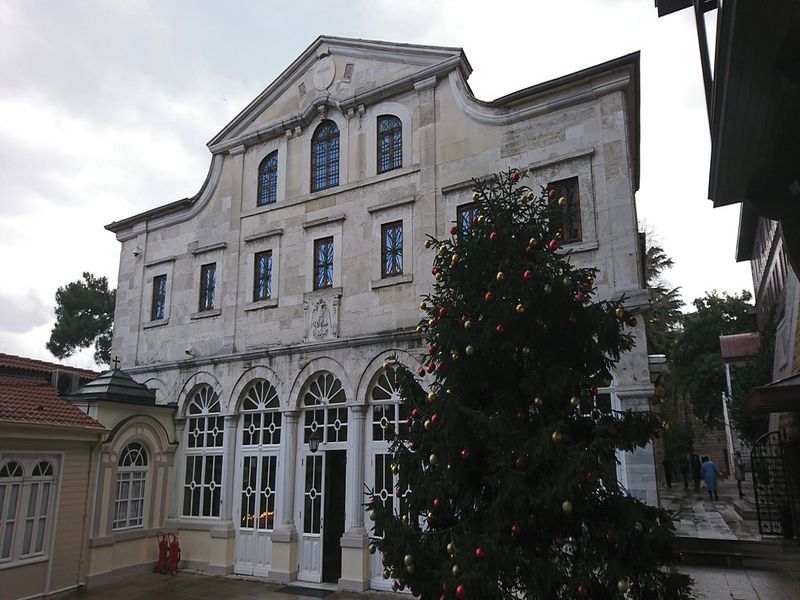
Another church that you should visit in the city is that of the Monastery of the life giving Spring (Balıklı Meryem Ana Rum Ortodoks Manastırı). This particular temple is particularly known for its spring, which performed and performs many miracles. According to legend on May 23, 1453 AD. a monk was frying fish next to the sanctuary, when someone brought him the news that the Turks had taken the city. The monk replied that only if the fish he was frying left the pan and fell into the sanctum sanctorum would he believe that such a thing happened. And according to the legend the fish came to life and fell into the holy spring. To this day, seven fish are preserved in the reservoir of the monastery, and in fact, as if they were half-fried on one side. Of particular interest is the fact that in the courtyard of the church are the tombs of all the Ecumenical Patriarchs!
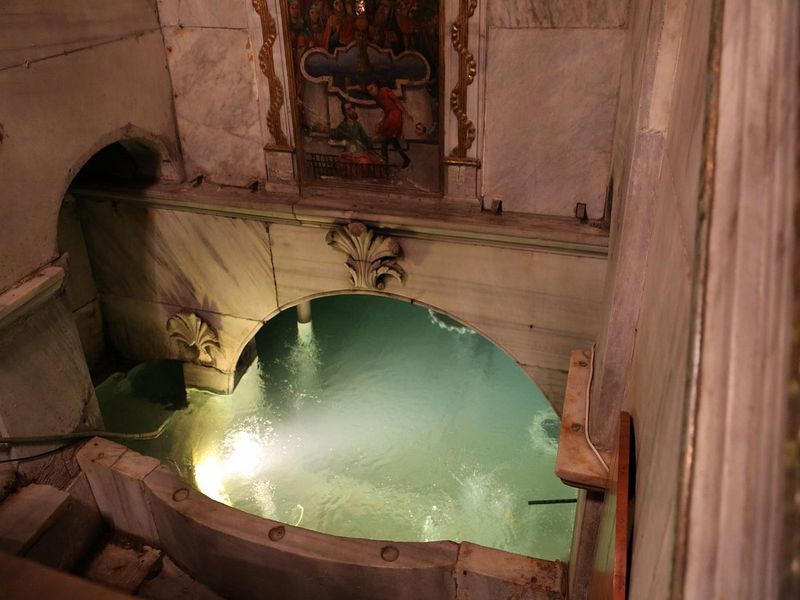
Finally, a visit to the Holy Church of the Virgin of Vlaherna (Vlaherna Meryem Ana Kilisesi) seems imperative. It is a temple of utmost importance for thousands of believers throughout the centuries and one of the most important pilgrimages of the Virgin Mary. It was built between 450-453 by Empress Pulcheria and her husband Marciano and is accompanied by many historical events. But the top historical event that made the Virgin of Vlacherna famous for her miraculous properties was during the siege of the city by the Avars and Persians in 626. While the city was about to fall and the besiegers were preparing for their final attack, the Patriarch Sergius surrounded the walls of the city with the icon of the Virgin of Vlacherna and encouraged the people. That night, a terrible whirlwind arose and destroyed the besieging troops. The faithful, attributing the solution of the siege to the miraculous icon and to the help of the Virgin, sang in the church for the first time the well-known "Unseated Anthem", wanting to thank her for her help. After the fall of the city, the temple was completely destroyed, it was partially restored by the Patriarchate and today it can be visited, although it is not in its original form.
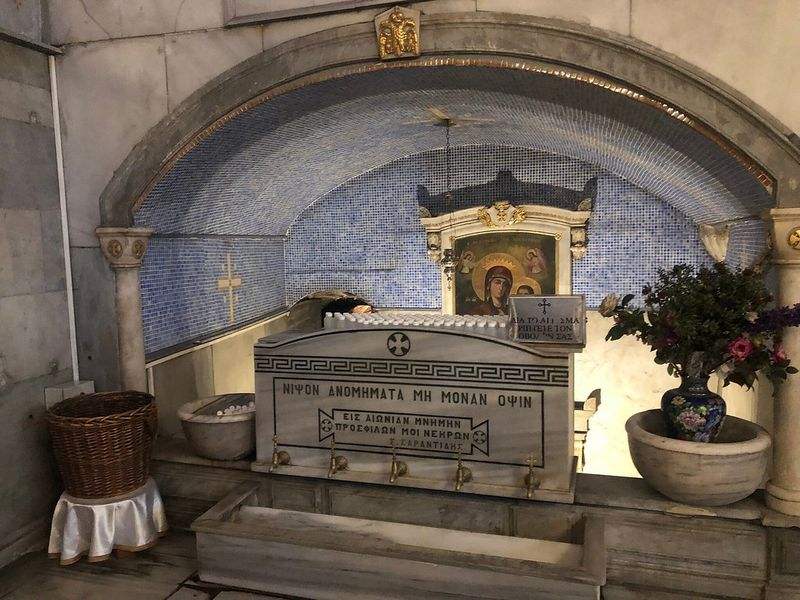
The museums
There are many museums and art spaces in Istanbul that deserve your attention, but four stand out. The first one, or rather the first three, that I suggest you visit are the Archaeological Museums (İstanbul Arkeoloji Müzeleri). It is a complex of three museums that includes the Archaeological Museum (in the main building), the Museum of the Ancient East (Eski Şark Eserleri Müzesi) and the Museum of Islamic Art (Çinili Köşk). These three separate main units are located in the same garden and house the collections of Topkapi Palace, formed in the late 19th century. The Istanbul Archaeological Museum, which is the first regular museum to appear in the history of the Ottoman Empire and in Turkey, has about one million artifacts from a variety of cultures, brought from the imperial lands! Entrance costs 340 pounds, which is about 11.50e.
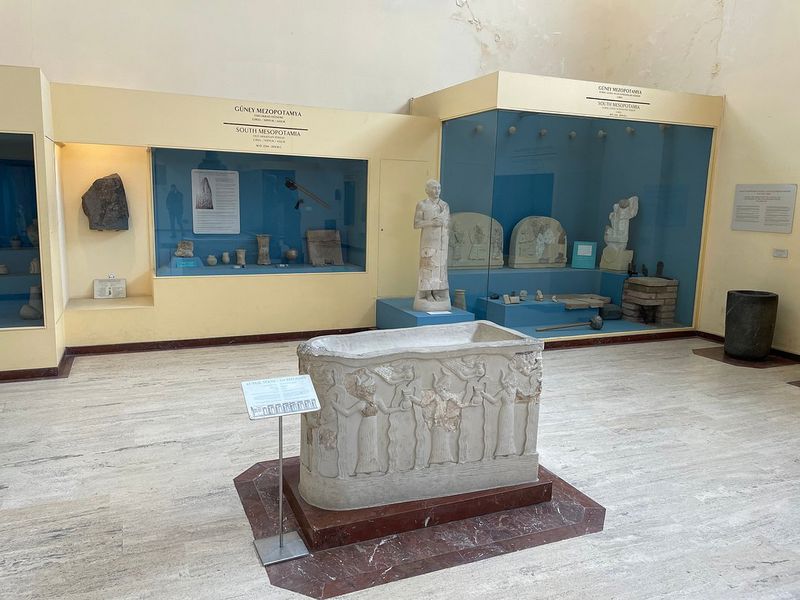
The other museum worth checking out in the city is the Museum of Turkish and Islamic Art (Türk ve İslam Eserleri Müzesi), located in Sultanahmet square in the Fatih district. The building was Pargali İbrahim Pasha's palace and contains notable collections of Islamic calligraphy, tiles and carpets, as well as ethnographic exhibitions on various cultures in Turkey, particularly nomadic groups. The entrance costs 390 pounds, which is a little more than 13e.
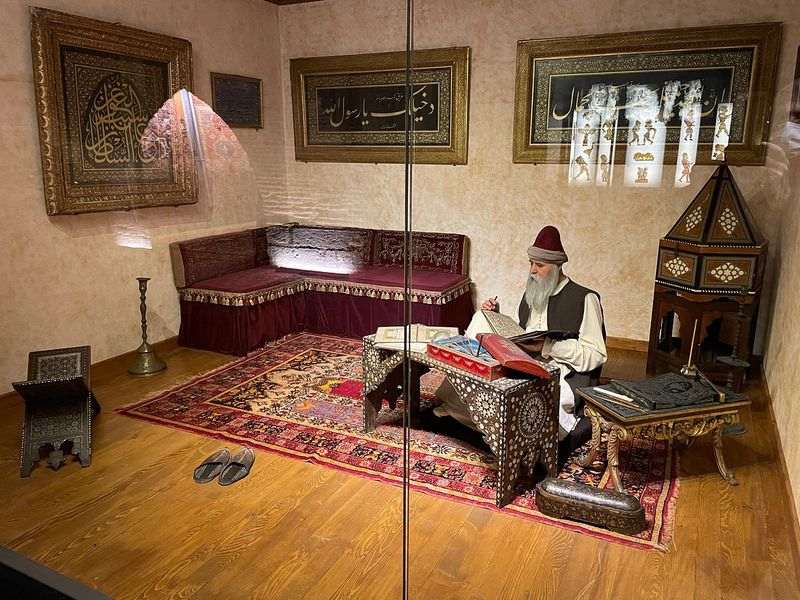
The Seven Towers of Istanbul (Yedikule Hisarı Müzesi) is a castle built into the walls of Constantinople, which today can be visited. It naturally consists of seven towers, with the first being built in 413 by Theodosius. Another four towers were built during the Byzantine period, while the remaining three were constructed during the Ottoman period. After the fall of the city, this particular place was used as an observatory, prisons, warehouse and zoo, until it was turned into a museum in 1968. The entrance for visitors from outside Turkey costs 100 lira, which is about 3.5e.
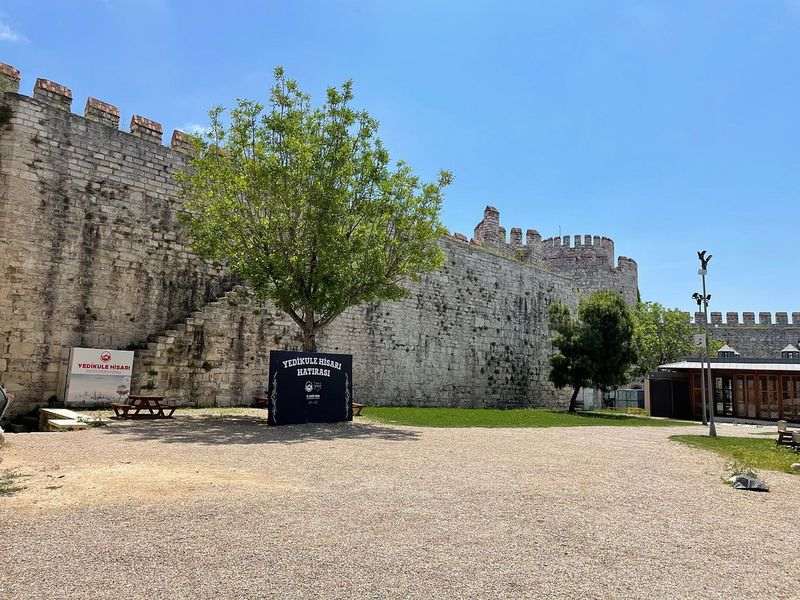
Last but not least, I left the Museum of Modern Art of Istanbul (Istanbul Moderna). It is a contemporary art gallery located in the Beyoğlu area. The museum was inaugurated on December 11, 2004 and was Turkey's first contemporary art gallery. It focuses mainly on Turkish artists, having over 2500 thousand paintings. Entrance to the museum costs 350 pounds, which is almost 12e.
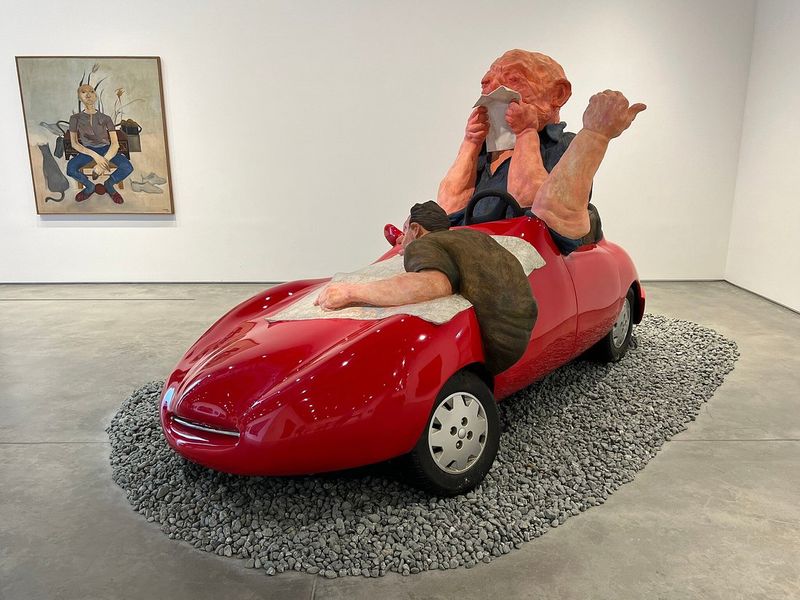
How to go
Istanbul can be reached either by road or by air. If you choose the first option, you will have to travel a distance of about 600 km, of which 340 are within Greece, and it will take about six hours to reach your destination. The roads in both Greece and Turkey are quite good, but in the Istanbul there is a traffic jam resulting in constant traffic on the roads. If you choose to go to Istanbul by air, you should know that it has two airports. Istanbul is served by two airports Istanbul Airport (IST), which is considered one of the largest and most modern in the world, serving the European side and Sabiha Gokcen (SAW), which is located on the Asian side. Thessaloniki is connected by air to Istanbul and the airport of the same name through Turkish Airlines and Aegean. With proper planning, one can find tickets starting from €226 round trip.
Where to stay
Istanbul is an enormous and a highly touristic city, spread over many kilometers, which means a lot of accommodation. Due to the devaluation of the Turkish lira, accommodation prices are considered relatively cheap, so I recommend finding something as central as possible. So my suggestion is the Golden Age, a four-star hotel located in Taksim Square that offers all the luxuries and comforts that a modern visitor is looking for.
How to move
Istanbul has an extensive public transport network with metro, state and private buses, trams and ferry boats. The metro is particularly modern and together with the buses will give you the possibility of transportation to all parts of the city. On the other hand, the tram moves mainly in the city center to the surrounding suburbs, while a different and nostalgic way of transportation are the cable cars that connect many parts of the city. Also, don't forget to use the ferry boats that travel the Horned Gulf and the Bosphorus. Taxis in Istanbul are everywhere and relatively cheap. However, ask that the taxi meter be open, as defined by law, as it is not meant for Turks, let alone if you are also a tourist. Also watch out for the routes as their drivers tend to make circles to increase the price. Finally, renting a car is probably a bad idea, since apart from the excessive traffic on the roads; you will quickly realize that the Turks drive by their "own" rules!
What to eat
Turkish cuisine is world famous and has many similarities with Greek cuisine, which makes perfect sense. The protagonist of course is the meat, seasoned with intense and spicy spices, while the use of vegetables is also abundant. Although based on lamb, Turkish cuisine also includes beef and chicken, as well as all kinds of seafood. It excludes, of course, pork because of religion. Istanbul is objectively one of the cities with the most options in terms of street food! The first and best are kebab and doner, that is, something like the Greek soutzoukakia and gyros! You will find them everywhere and in many variations with both lamb and chicken. Also, don't forget to eat fish, as there is plenty of it, and even some you will only find them there! A famous fish street dish is ekmek balik, which is basically a sandwich with fish fillet and various vegetables! Also, you should try the famous Turkish lakhmajun which is quite similar to pizza, but with minced meat on top. As for the sweets, you should taste their syrups, with the first and best being the baklava. Next, don't miss the Kazan Dipi, a sweet that contains chicken(!), the Tauk Gyoksu with caramelized cream and pistachio and the Kiunefe, which looks like kadaifi with cheese and syrup. To taste the most delicious baklava of your life, first visit Karakoy Gulluoglu and then Hakkı Zade Hafiz Mustafa 1864. For breakfast or brunch Mado, while if you are a lover of chocolate and more specifically profiteroles, take a walk to Inci Pastahanesi. Finally, to complete your culinary journey I recommend Nusr-Et Steakhouse Etiler, by the famous Nusret and Massa Bistro.
Useful information

In Istanbul we travel with a passport or a new type of Police ID, where the details are indicated in Latin characters.
In Istanbul the language used is, of course, Turkish, but most people know some Greek for tourist reasons. The younger ones know English too, while everyone is willing to help if they know.
The currency of the country is the Turkish Lira (TRY), and its exchange rate at the moment is 1€ = 28.44 lira.
Many shopkeepers also accept euros.
Convert your money either to the dozens of banks that exist in the city, or to the exchange offices, which indicate the exchange rates, since they take very little commission.
Take care of your personal belongings as in the city is increased the risk of pickpockets and other small scammers.
Getting to and from the airport is simple, since there are continuous metro routes, which take you very soon from the city center. You can also use a bus, and a taxi is an appropriate solution.
The Greek Unpaid Consulate General in Istanbul is located on Huseyinaga MH Street., Turnac bas Sok. No: 22, 34435 Beyoglu and her phone is+90 212 393 82 91.
The best time to visit Istanbul is spring or autumn. In winter it is quite cold and sometimes snows. The main problem of all seasons is humidity, which greatly intensifies the cold, but also the heat.
Recommended excursions → Princes Islands, Bursa, Canakkale

If this article seemed interesting or contributed to your quality information, then you can like my facebook page: o_thessalonikios or follow me on instagram!
Mouzakidis Pantelis





